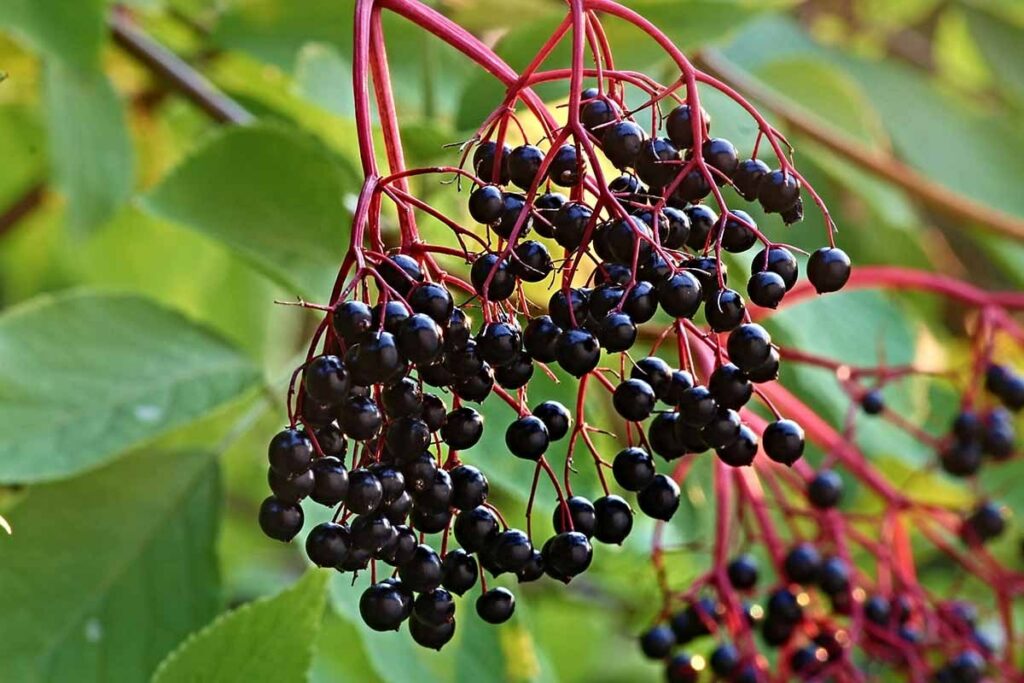Living in an urban area means limited space, but this shouldn’t prevent you from bringing nature into your home, apartment or condo.
Vertical gardens are the perfect solution to bring the outdoors in. They offer many benefits, like easy access to fresh produce, enhanced curb appeal, improved air quality and reduced noise pollution.
We rounded up the 15 best vertical growing plants that fit your every need. Read on to start choosing plants for your vertical garden!
1. Pothos (Epipremnum aureum)
| Scientific Name | Epipremnum aureum |
| Common Name/s | • Devil’s Ivy • Devil’s Vine • Golden Pothos • Ivy Arum • Marble Queen • PothosTaro Vine |
| Family | Araceae |
| Life Cycle | Perennial |
| Propagation | Stem cutting |
| Height | 6 inches to 20 feet |
| Growth Rate | Medium |
| Maintenance | Low |
| Toxicity | • Medium • Contains calcium oxalate crystals |
| Poison Symptoms | • Oral irritation • Pain and swelling of mouth, tongue, and lips • Excessive drooling • Vomiting Difficulty swallowing • Skin irritation • Contact dermatitis • Diarrhea |
Pothos is a vining plant perfect for vertical gardens because of its fresh, green and heart-shaped leaves.
Also called the money plant, it can reach a height of 20 feet while its green leaves with yellow blotches flow down your vertical garden.
When the pothos plant is grown indoors, its lengthy vines curl around the container, resembling snakes.
It’s an excellent choice for newbie planters since it only needs indirect sunlight and little care to flourish.
2. Sword Fern (Polystichum munitum)
| Scientific Name | Polystichum munitum |
| Common Name/s | • California Sword Fern • Giant Holly Fern • Imbricate Sword Fern • Swordfern • Sword Fern • Western sword • Western Swordfern • Western Sword Fern • Boston Fern |
| Family | Polypodiaceae |
| Life Cycle | Perennial |
| Propagation | Division |
| Height | 3 to 5 feet |
| Growth Rate | Slow |
| Maintenance | Low |
| Toxic | Non-Toxic |
Sword ferns are another excellent choice for trailing plants, ideal for vertical gardens. Their arching fronds are widely available and add texture to garden arrangements.
Sword ferns are sought after for their glossy and leathery leaves. They’re commonly used for draping or as green dividers, with stems growing up to five feet.
They require little upkeep, watering and sunlight. We recommend that you keep it close to the base of your green wall to maintain the moisture of its soil.
3. Lipstick Plant (Aeschynanthus radicans)
| Scientific Name | Aeschynanthus radicans |
| Common Name/s | • Lipstick Plant • Lipstick Vine • Lipstick Flower |
| Family | Gesneriaceae |
| Life Cycle | Perennial |
| Propagation | Stem cutting |
| Height | 3 to 4 inches |
| Growth Rate | Medium |
| Maintenance | Low |
| Toxic | Non-Toxic |
The lipstick plant is a brightly-colored vining perennial plant native to the rocky tropical regions of Southeast Asia.
It has glossy and fleshy green leaves and distinct red flowers shaped like lipstick, blooming throughout the year.
Lipstick plants can fill your green wall or hanging basket from a distance. You can train it using trellises or let it naturally cascade from a vertical wall.
This is also a beginner-friendly plant since it can survive in low light and even in dry conditions.
4. Philodendron (Philodendron hederaceum var. hederaceum)
| Scientific Name | Philodendron hederaceum var. hederaceum |
| Common Name/s | • Heart-leaf Philodendron • Parlor Ivy • Philodendron • Sweetheart Plant |
| Family | Araceae |
| Life Cycle | Perennial |
| Propagation | Stem cuttings |
| Height | 4 inches to 6 feet |
| Growth Rate | Rapid |
| Maintenance | Low |
| Toxic | • Low • Contains insoluble calcium oxalates |
| Poison Symptoms | • Oral irritation • Pain and swelling of the mouth, tongue and lips • Excessive drooling • Vomiting Difficulty swallowing |
Looking for a plant that will give your vertical garden a tropical vibe? Try out philodendrons!
Philodendrons are low-maintenance vining plants known for their shiny, yellow-green leaves. This plant needs constant high humidity, so spraying water over it during the winter will greatly help.
They’re fast-growing plants, so they may need regular pruning to keep them in their containers.
5. Morning Glory (Ipomoea purpurea)
| Scientific Name | Ipomoea purpurea |
| Common Name/s | • Common Morning Glory • Japanese Morning Glory |
| Family | Convolvulaceae |
| Life Cycle | Annual |
| Propagation | Seed |
| Height | 3 to 8 feet |
| Growth Rate | Rapid |
| Maintenance | Medium |
| Toxic | • Low • Contains alkaloids |
| Poison Symptoms | Vomiting |
Morning glories are famous for their blooming habit, where the flowers open in the morning and close before the afternoon.
They’re annual vines native to Central and South America, producing lengthy vines with fragrant flowers that you can train to decorate your vertical garden.
Expect their trumpet-shaped and nectar-rich flowers to draw pollinators like hummingbirds and butterflies to your vertical garden from mid-summer until the frost season.
6. English Ivy (Hedera helix)
| Scientific Name | Hedera helix |
| Common Name/s | • Algerian Ivy • Baltic Ivy • Branching Ivy • California Ivy • Common Ivy • English Ivy • Glacier Ivy • Hahn’s Self-Branching English Ivy • Needlepoint Ivy • Sweetheart Ivy |
| Family | Araliaceae |
| Life Cycle | Perennial |
| Propagation | • Division • Root Cutting • Seed • Stem Cutting |
| Height | 20 to 80 feet |
| Growth Rate | Rapid |
| Maintenance | High |
| Toxic | • Medium • Contains triterpenoid saponins and polyacetylene compounds |
| Poison Symptoms | • Skin irritation with redness, itching, and blisters • Burning sensation in the throat • Delirium • Stupor • Convulsions • Hallucinations • Fever and rash • Vomiting • Abdominal pain • Hypersalivation • Diarrhea |
The English ivy is a plant that naturally clings to walls, making it a perfect vertical garden. It’s an evergreen vine that appends itself via airborne roots to different surfaces.
It’s sought after for its cool, vibrant green foliage, which spreads on dividers, walls or any vertical surface. It grows beyond 3 feet which you can take advantage of to add height to your vertical garden.
The English ivy is a drought-tolerant plant and attracts beneficial insects that help control pests such as ladybugs and hoverflies.
Finally, this plant has air-purifying capacities. It removes toxins from the air, which many urban gardeners would benefit from.
7. Geranium (Pelargonium)
| Genus | Pelargonium |
| Common Name/s | • Geranium • Scented Geranium |
| Family | Geraniaceae |
| Life Cycle | Perennial |
| Propagation | Stem cutting |
| Height | 1 to 2 feet |
| Growth Rate | Rapid |
| Maintenance | Medium |
| Toxic | • Low • Contains geraniol and linalool |
| Poison Symptoms | • Vomiting • Anorexia • Dermatitis Ataxia • Muscle weakness • Depression Hypothermia in larger exposures |
If you want a constant supply of colorful flowers, get geraniums for your vertical green wall. They bloom clusters of red, purple, pink and white flowers throughout the planting season.
Geraniums are fast-growing and can reach up to 24 inches tall, so you can immediately enjoy their beauty as they climb through the trellises or fences to your vertical garden.
They’re also great companion plants as they attract beneficial pollinators such as bees and butterflies, which can also improve pollination of nearby plants.
Fortunately, geraniums only need medium light and can tolerate dry spells, so they’re a good choice for newbie planters.
8. Air Plants (Tillandsia)
| Genus | Tillandsia |
| Common Name/s | Air Plant |
| Family | Bromeliaceae |
| Life Cycle | Perennial |
| Propagation | • Division • Seed |
| Height | 2 inches to 7 feet |
| Growth Rate | Slow |
| Maintenance | Medium |
| Toxic | Non-Toxic |
Are there plants that can survive without soil? Yes, air plants are these one-of-a-kind species that can thrive without soil.
Air plants are a great addition to your collection since they give a tropical vibe to your vertical garden. They also require little upkeep, such as regular watering and partial indirect sunlight.
Since they thrive without soil, you get more freedom on where to showcase them in your design. Air plants are usually displayed using driftwood, rocks, wooden boards, wired hanging baskets, curtain rods or even a terrarium.
9. Basil (Ocimum basilicum)
| Scientific Name | Ocimum basilicum |
| Common Name/s | • Basil • Genovese Basil • Purple Basil • Saint Joseph’s Wort • Sweet Basil • Thai Basil |
| Family | Lamiaceae |
| Life Cycle | Perennial |
| Propagation | • Seed • Stem cutting |
| Height | 4 inches to 3 feet |
| Growth Rate | Rapid |
| Maintenance | Low |
A vertical herb garden wouldn’t be complete without basil, dubbed the “great herb of all time.”
Basil has a strong yet sweet flavor, primarily used in Italian dishes, salads, pizzas, and sandwiches. This herb is rich in vitamins A and C, antioxidants, and antibacterial and anti-inflammatory properties.
It also has a pleasant fragrance that adds flavor to the food and helps relieve stress and anxiety through aromatherapy.
This hardy, versatile herb grows well in almost all climates. As a companion plant, it also attracts pollinators like bees and butterflies, which will help pollinate nearby plants.
10. Cilantro (Coriandrum sativum)
| Scientific Name | Coriandrum sativum |
| Common Name/s | • Chinese Parsley • Cilantro • Coriander • Dhania |
| Family | Apiaceae |
| Life Cycle | Annual |
| Propagation | Seed |
| Height | 1 to 2 feet |
| Growth Rate | Rapid |
| Maintenance | Low |
Cilantro is another excellent herb to add to your vertical garden. Nothing is better than having this popular herb within your reach when making salsas, guacamole, or other Mexican food.
It has a strong flavor for sweet and savory dishes and a citrusy aroma, creating a relaxing garden atmosphere.
Cilantro herbs are easy to grow as it prefers full sun and well-drained soil. It’s also drought tolerant, so you can place it in areas that do not receive a lot of water.
11. Parsley (Petroselinum crispum)
| Scientific Name | Petroselinum crispum |
| Common Name/s | • Hamburg Parsley • Italian Parsley • Parsley • Turnip-rooted Parsley |
| Family | Apiaceae |
| Life Cycle | Biennial |
| Propagation | Seed |
| Height | 6 to 12 inches |
| Growth Rate | Slow |
| Maintenance | Low |
Parsley is a delicate sun-loving herb that you should place at the top of your green wall.
With this herb, you’ll enjoy a mild, peppery flavor to your salad, soup, sauces or other Italian-inspired dishes. It also gives off a minty aroma that enhances the taste of the food.
Parsley is also a beginner-level plant that prefers full sun and well-drained soil. It can even tolerate dry conditions.
It’s also a great companion plant, especially for tomatoes, to help deter pests.
12. Thyme (Thymus vulgaris)
| Scientific Name | Thymus vulgaris |
| Common Name/s | • Common Thyme • Garden Thyme • German Thyme • Thyme |
| Family | Lamiaceae |
| Life Cycle | Perennial |
| Propagation | • Division • Layering • Seed • Stem cutting |
| Height | 6 inches to 1 foot |
| Growth Rate | Medium |
| Maintenance | Low |
Thyme is the perfect addition to a low-maintenance vertical garden.
Thyme has a lot of health benefits, including its antioxidant, anti-inflammatory and immune-boosting properties.
It’s a drought-resistant perennial herb that needs full sun to survive. So, make sure to grow it at the top of your vertical garden.
Thyme is an excellent herb in a vertical garden because it improves soil quality by increasing nitrogen levels. It also repels pests like flies, mosquitoes and ants, keeping you and your plants healthy.
13. Peas (Pisum sativum)
| Scientific Name | Pisum sativum |
| Common Name/s | • Austrian Winter Pea • English Pea • Field Pea • Green Pea • Peas |
| Family | Fabaceae |
| Life Cycle | Annual |
| Propagation | Seed |
| Height | 1 foot |
| Growth Rate | Rapid |
| Maintenance | Medium |
Most pea plants are vining types, meaning they grow tall and can be trained to climb on vertical gardens. They are cool-weather crops that survive amid shoulder seasons, like during spring and fall.
Pea plants are great companion plants because they can fix nitrogen from the air and add them to the soil, which can help add nutrients to nearby plants.
Peas grow best even in containers, which makes them a great vertical garden plant. Just soak the pea seeds the night before planting to ensure germination.
Common types of this plant include the English, snow and snap peas. English peas have inedible seed pods, while snow and snap peas can be eaten raw or cooked.
14. Tomatoes (Solanum lycopersicum)
| Scientific Name | Solanum lycopersicum |
| Common Name/s | • Love Apple • Pomme d’Amour • Tomatoes |
| Family | Solanaceae |
| Life Cycle | • Annual • Perennial |
| Propagation | Seed |
| Height | 1 to 10 feet |
| Growth Rate | Rapid |
| Maintenance | High |
Tomatoes are among the most popular vertical garden vegetables because of their vigorous vines.
Tomato plants are also heat-loving, making the vertical garden’s upright position fit for their sunlight needs to produce those plump and juicy red tomatoes.
We recommend that you use indeterminate tomato varieties because they grow tall and can be trained using the trellises of your green wall.
15. Cucumbers (Cucumis sativus)
| Scientific Name | Cucumis sativus |
| Common Name/s | • Cucumber • Garden Cucumber • Gherkin • Immature Cucumbers |
| Family | Cucurbitaceae |
| Life Cycle | Annual |
| Propagation | Seed |
| Height | 8 inches to 7 feet |
| Growth Rate | Rapid |
| Maintenance | Medium |
Cucumbers are heat-loving annual plants native to India. They are naturally vining plants easily trained to grow on any vertical structure.
Cucumber plants can grow vines as long as 7 feet, making vertical gardens a space-saving and easier way to harvest cucumbers.
This plant also requires full sun to thrive, so the upright structure helps it receive as much sunlight as possible.
As a prolific crop, you’ll get a bountiful harvest out of your cucumber plant from a vertical garden. So, if you want to grow your food, you can add this to your list.
FAQs on Vertical Growing Plants
Vertical gardening is a system developed to support plants growing vertically along tiered surfaces like walls, fences, posts, and trellises.
Rhizomes are modified plant stems that produce vertical shoots that grow upwards.
The taproot, or the plant’s primary root, grows vertically down into the soil to anchor the plant and extract water, minerals and other nutrients deep in the ground.
Vertical leaves refer to those leaves whose tips face upwards as an adaptive mechanism to absorb as much sunlight as possible.





